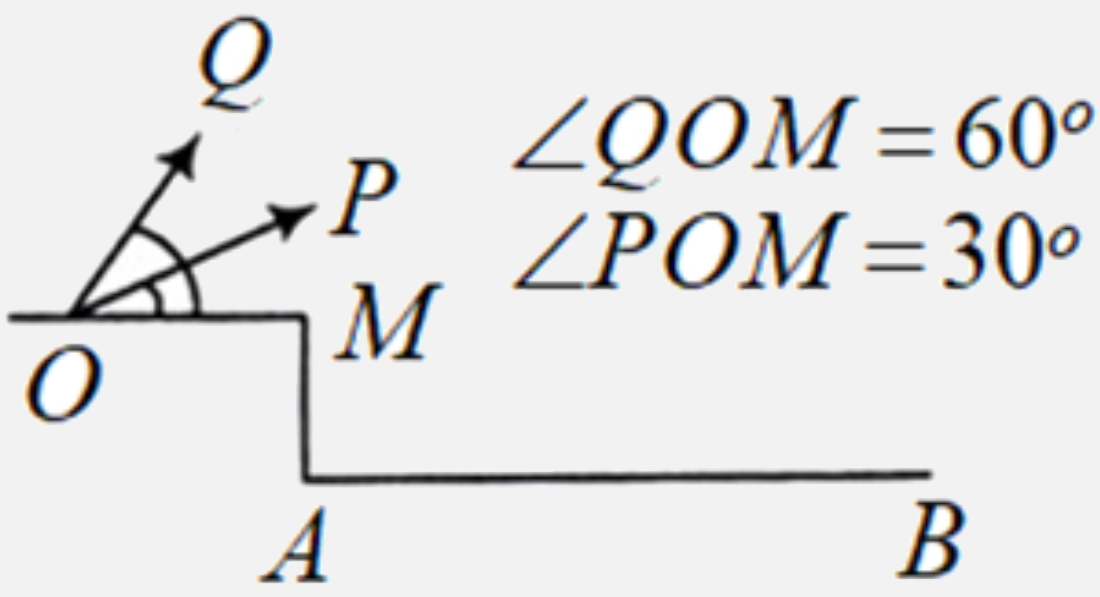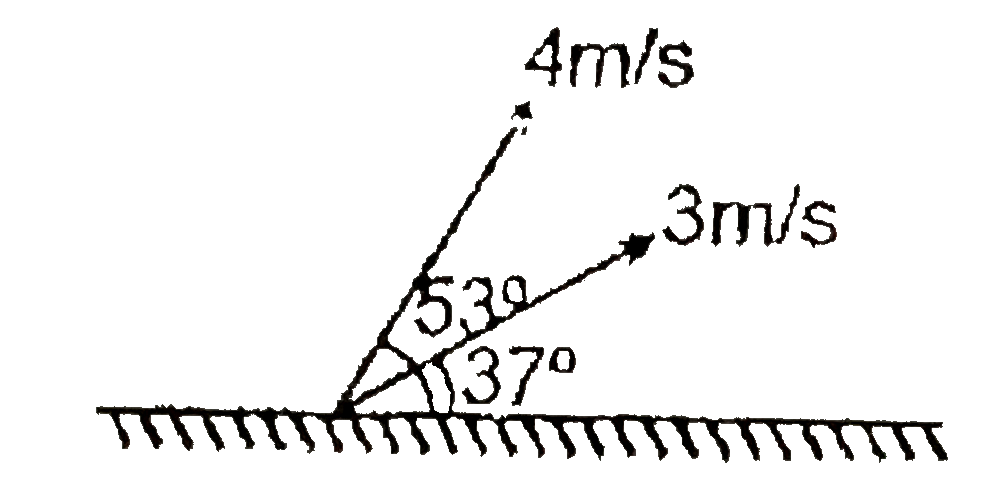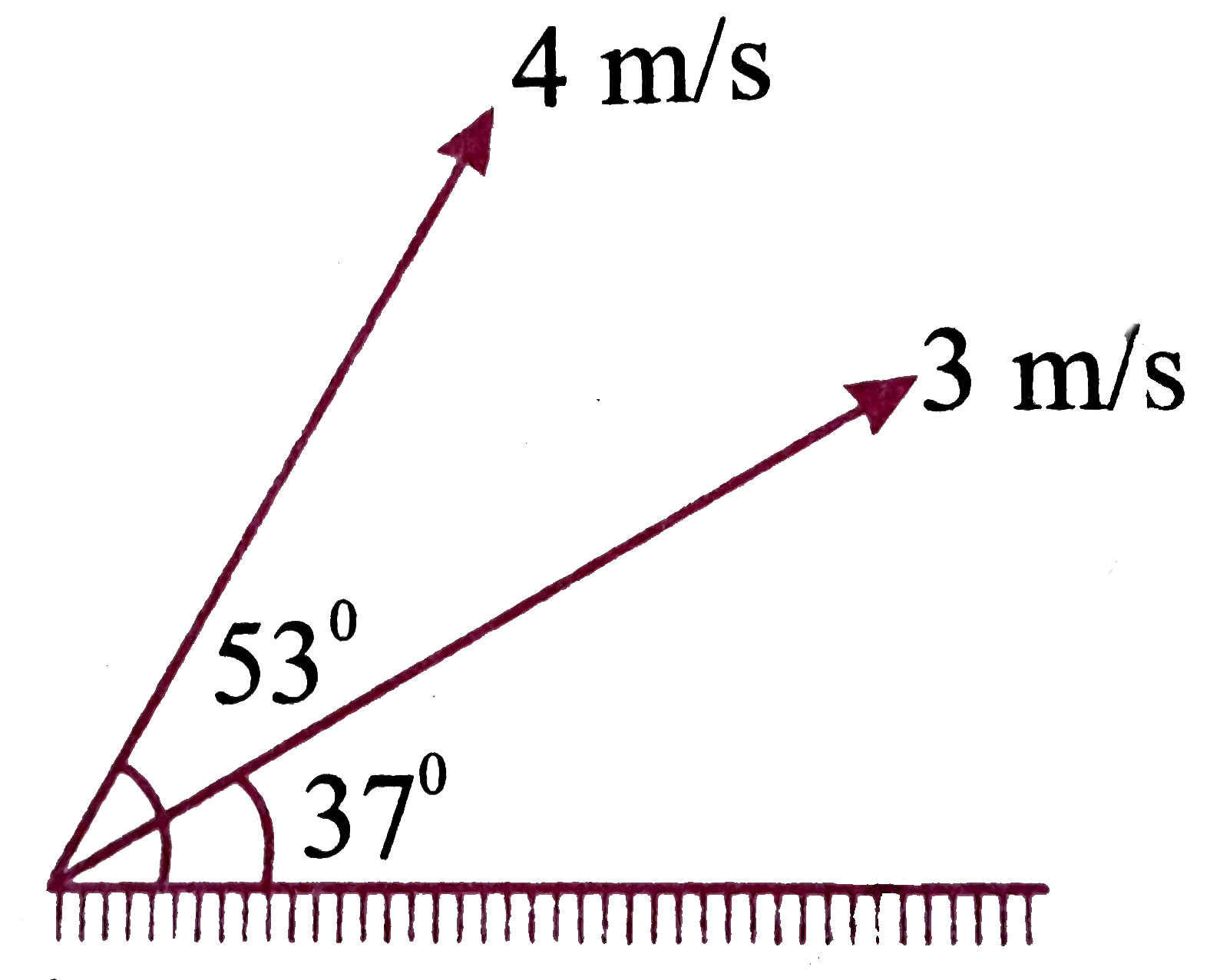Two particles P & Q are projected simultaneously from a point O on a level ground in the same vertical plane with the same speed in directions making angle of 30∘ and 60∘ respectively with the horizontal.
Both reach the ground simultaneously
P reaches the ground earlier than Q
Both strike the same point on the level ground
The maximum height attained by Q is thrice that attained by P
The correct Answer is:B, C, D
Range =u2sin2θg
For θ & (90−θ) angles, rang will same so for 30∘ & (90−30∘)≡60∘, projections both strike at the same point. For time of flight, vertical components are responsible
h1h2=u2sin2θ1u2sin2θ2=sin230sin260=13
Topper's Solved these Questions
- BOOK - ALLENCHAPTER - KINEMATICSEXERCISE - EXERCISE-036videos
KINEMATICS
- BOOK - ALLENCHAPTER - KINEMATICSEXERCISE - Assertion-Reason20videos
KINEMATICS
- BOOK - ALLENCHAPTER - KINEMATICSEXERCISE - EXERCISE-0155videos
KINEMATICS
- BOOK - ALLENCHAPTER - ERROR AND MEASUREMENTEXERCISE - Part-2(Exercise-2)(B)22videos
ERROR AND MEASUREMENT
- BOOK - ALLENCHAPTER - KINEMATICS (MOTION ALONG A STRAIGHT LINE AND MOTION IN A PLANE)EXERCISE - BEGINNER S BOX-78videos
KINEMATICS (MOTION ALONG A STRAIGHT LINE AND MOTION IN A PLANE)
Similar Questions
Two identical balls P and Q are projected with same speeds in a vertical plane from the same point O making projection angles with horizontal 30∘ and 60∘, respectively and they fall directly on the plane AB at points P' and Q' respectively. Which of the following statement is true about distances as given in options ?
 View Solution
View SolutionParticles P and Q of mass 20g and 40g respectively are simu ltaneously proejected from points A and B on the ground. The initial velocities of P and Q make 45∘ and 135∘ angles respectivley with the horizontal AB as shown in the Fig. 5.44 Each particle has an initial speed of 49m/s . the separation AB is 249m. both particles travel in the same vertical plane and undergo a collision. After collision P retraces its path. Determine the position of q when it hits the grou.d How much time after the collision does the particle Q take to reach the ground? (Take g=9.8m/s2)
 View Solution
View Solution
Knowledge Check
- Question 1 - Select One
Two particles are projected simultaneously in the same vertical plane, from the with speed u1 and u2 at angle of projection θ1 and θ2 respectively with the horizontal. The path followed by one, as seen by other (as long as both are in flight), is
Aan inclined straight lineBa vertical straight line if u1cosθ1=ucosθ_(2)Cboth (1), (2)Dnone - Question 2 - Select One
Two particle are projected with same initial velocities at an angle 30∘ and 60∘ with the horizontal .Then
Atheir heights will be equalBtheir height will be differentCtheir range of flight will be equalDtheir ranges will be different - Question 3 - Select One
Two bodies of same mass are projected with the same velocity at an angle 30∘ and 60∘ respectively.The ration of their horizontal ranges will be
A1:1B1:2C1:3D2:√2
Two particles are projected with speed 4m/s and 3m/s simultaneously from same point as shown in the figure. Then :
 View Solution
View SolutionTwo particles are projected with speed 4m/s and 3m/s simultaneously from same point as shown in the figure. Then:
 View Solution
View SolutionThree particles A, B and C are projected from the same point with the same initial speeds making angles 30∘,45∘and60∘ respectively with the horizontal. Which of the following statement is correct?
View SolutionTwo projectiles are fired from the same point with the same speed at angles of projection 60∘and30∘ respectively. Which one of the following is true?
View SolutionTwo particles are projected simultaneously from the same point, with the same speed, in the same vertical plane, and at different angles with the horizontal in a uniform gravitational field acting vertically downwards. A frame of reference is fixed to one particle. The position vector of the other particle , as observed from this frame, is →r. Which of the following statement is correct?
View Solution

